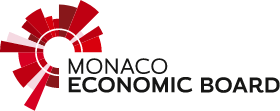

A revival of interest in the theme of the cabinets of curiosities, or previously known as the Chamber of Wonders or Studiolo, occurred during the reign of the Medici family in Florence. The men of power liked to collect paintings, animals, plants, minerals of distant origins and all kinds of objects in order to make them admired by erudite people.
Les ventes publiques organisées sur ce thème (dernière en date la Maison Millon Riviera qui proposait « la Promenade des Merveilles » à l’occasion de l’inauguration de la salle des ventes-galerie le mois dernier à Nice), l‘exposition sur « les carnets de collections » jusqu’en septembre 2018 présentée au Musée de Confluences à Lyon , et même un film sélectionné au Festival de Cannes (Le Musée des Merveilles de Todd Haynes) prochainement en salle, sont autant d’évènements portés sur l’intérêt des origines naturelles et culturelles de l’humanité.
Dans le livre de mesdames Davenne et Fleurent, « Cabinets de curiosités La passion de la collection » publié aux Editions de La Martinière en 2011, les auteurs décrivent la forme originelle du cabinet des curiosités qui a pris naissance en Italie. Le studiolo se multiplie au Cinquecento au sein d’illustres familles: Médicis à Florence, Montefeltre à Urbino et Gonzague à Mantoue qui souhaitent affirmer leur gloire. Une pièce particulière nommée « studiolo » est dédiée à la présentation des collections sous forme d’accumulation d’objets rares: peintures, horloges, grimoires…
The Renaissance man takes a new look at his place in the world and questions the old ways of thinking based essentially on religious principles. The foundations of humanist philosophy blossomed, notably through the opening up of intellectual thought in the light of translations of ancient Greek texts and the beginnings of science. These new notions are approached then transmitted in the circles close to the power.
De l’observation des curiosités de la nature, nait une réflexion sur l’origine du Monde. Outre le fait d’affirmer sa puissance, la chambre des merveilles devient un lieu de connaissance et de transmission de la connaissance symbolique et mythologique. Il se transforme en grotte au XVI ème siècle, le lieu d’exposition s’oriente vers une typologie de « monstruosités » connues alors. Le thème a été repris lors d’une exposition à la galerie d’art du conseil général des Bouches du Rhône au titre évocateur « le cabinet des merveilles éternuements de corneilles, pieds d’huître et oeufs de léopard ».
At the end of the 17th century, it reflects the more scientific spirit of the time with a desire to experiment. In 1683, Elias Ashmole founded the first university museum in the world in Oxford.
La rigueur encyclopédique s’impose au XVIII ème siècle. Les classements s’organisent par domaines et deviennent plus systématiques et précis. Antoine Schnapper explique magistralement dans son ouvrage « le géant, la licorne et la tulipe » la transition opérée sur les thèmes histoire et histoire naturelle des cabinets de curiosité en France au siècle des Lumières. La rédaction des dictionnaires pose la problématique du classements des espèces animales et végétales, des livres, médailles, objets archéologiques, par zone géographique ou intérêt.
The presentation of natural or man-made objects in a reduced space is therefore based on a subjective selection. Reducing the World in a closed space amounts to presenting the look we have on it at a given moment.
From the 15th century's room of wonders to the decorator Jacques Garcia who reinvents the principle in the 21st century in his Château du Champ de Bataille, we see the same desire to preserve and possess extraordinary objects in the sense of rarity but also for their historical interest. The transmission of universal values passes through the initiation of young generations to the splendors of our planet and human genius.
Contemporary artists sensitive to symbols tirelessly reinterpret the same themes as their elders. Thus the ostrich egg of Jean Michel Othoniel, exhibited at the Museum of Hunting and Nature in Paris, which sets an ostrich egg in glass which symbolizes the union of the artist's hand and a natural work.
What are the objects that can still amaze us like children?
Jaded by luxury brand accessories or computer screens, we can easily recharge our batteries with the beauty of nature and artists. To rediscover the taste of the observation of the Wonders of the World, the sharing of this knowledge are a real pleasure.
The possession of objects piquing our curiosity is not synonymous with exorbitant prices; to begin with, a visit to the mineral and fossil fairs allows us to approach the moving theme of the mineral kingdom since the origin of millions of years and to locate the traces of the birth of life on earth and then of animals and men. These fairs present numerous varieties of cut, rough or ornamental stones, pearls and shells, ethnic objects as well as meteorites allowing a moving trip in space-time.
Pour 4 euros l’entrée, l’association des Naturalistes de Nice organise leur 33 ème bourse aux minéraux et fossiles les 18 et 19 novembre 2017, vous retrouverez toutes les manifestations organisées en France sur le site foires aux mineraux et fossiles. A ne pas manquer : l’incontournable mineral expo à Paris du 1 au 3 décembre 2017 où notre ami Thierry Pradat vous accueille sur son stand « gem plus » spécialisé dans les pierres de collection (quartz à inclusions entre autres).
Brocantes, auctions and antique dealers specializing in old (jewelry, archaeology, books, numismatics, stamps, cartography) or contemporary art (salon galeristes - salon des collectionneurs on December 8 and 10, 2017 at the Carreau du Temple) will be able to complete your own universe.



